Seven Questions Over Lunch with Evan Turk
 July 5th, 2016 by jules
July 5th, 2016 by jules
and storytellers to bring the people together.”
(Click to enlarge spread)
 This is supposed to be Seven Questions Over Breakfast with Evan Turk but it’s lunch instead, since I’m slow in getting started today. That’s okay, because Evan says he’s not a breakfast-eater anyway. He is, however, a fan of coffee, which we can have any time of day. Of course.
This is supposed to be Seven Questions Over Breakfast with Evan Turk but it’s lunch instead, since I’m slow in getting started today. That’s okay, because Evan says he’s not a breakfast-eater anyway. He is, however, a fan of coffee, which we can have any time of day. Of course.
Evan has illustrated what I think is one of the year’s most beautiful picture books, The Storyteller (Atheneum, June 2016), which is the first book he’s both written and illustrated. (The book’s opening spread is pictured above.) It’s a story within a story within a story, and it’s a visual tour de force. In August, we’ll see his illustrations for the follow-up to Bethany Hegedus’ and Arun Gandhi’s Grandfather Gandhi, which was released in 2014 and was the book that first introduced readers to his artwork. In Be The Change: A Grandfather Gandhi Story, Bethany and Arun examine how wastefulness can lead to violence.
Evan is here today to share lots of art from each book, as well as preliminary images of all sorts (boy howdy, does this guy do his research — and what beautiful research it is), and he talks a bit about what’s next for him. I thank him for visiting and, especially, for sharing so much art.
Jules: Are you an illustrator or author/illustrator?
Evan: Both! My first book as author/illustrator, The Storyteller, was just published, and I’ve always loved writing and illustrating my own stories.

Jules: Can you list your books-to-date?
Evan:
- Grandfather Gandhi by Bethany Hegedus and Arun Gandhi, 2014
- The Storyteller, 2016
- Be The Change by Bethany Hegedus and Arun Gandhi, 2016
- Muddy by Michael Mahin, 2017
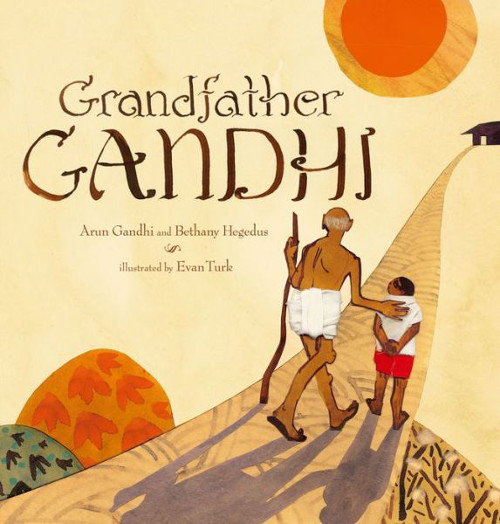
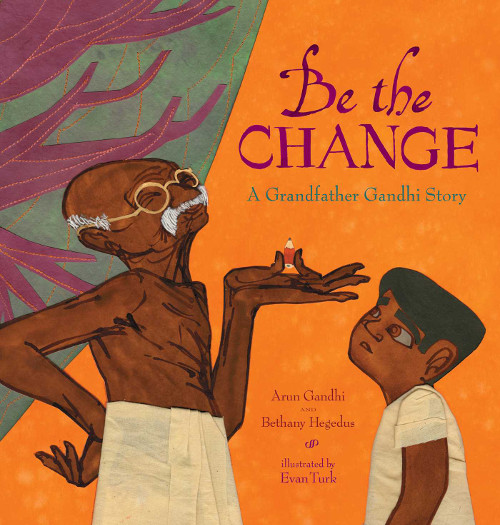
Jules: What is your usual medium, or––if you use a variety—your preferred one?
Evan: I always like to find a different way of doing the art for a project, because I feel like every new topic demands a different kind of expression. Grandfather Gandhi and Be The Change were both collage, which was a technique that came out of the desire to use cotton in the first book. One of Gandhi’s platforms was that India spin and weave its own cotton so that they would not need to pay taxes on Indian-grown cotton spun and woven in England. It was all about discipline and self-sufficiency and turning a material into something useful. That was really the same story of Arun, in the book, learning to create something useful with his anger. So I wanted to use cotton, cotton yarn, and cotton fabric throughout the book to reinforce that. So, collage became the medium!

All religions were welcome.”
(Click to enlarge spread)

(Click to enlarge spread)

When Grandfather talked, thousands came, overflowing the gardens.
People young and old spilled into the streets.”
(Click to enlarge spread)

(Click to enlarge spread)

(Click to enlarge spread)

We walked amid the hustle of ashram life: new planting, chores, prayers, work.”
(Click to enlarge spread)
Be The Change (Atheneum, August 2016)
For The Storyteller, a lot of the materials I used (ink, water-soluble crayons, pencil) came out of what I used while I was doing research drawing in Morocco. I like working on location, because it forces you to work with what you have and come up with new visual solutions. This book is a pretty direct translation of that energy into the final art. I used a technique with fire and sugared tea, which I learned from artists in Morocco, and indigo pigment that I brought back with me, so the whole look of the book came out of experiences from that trip.






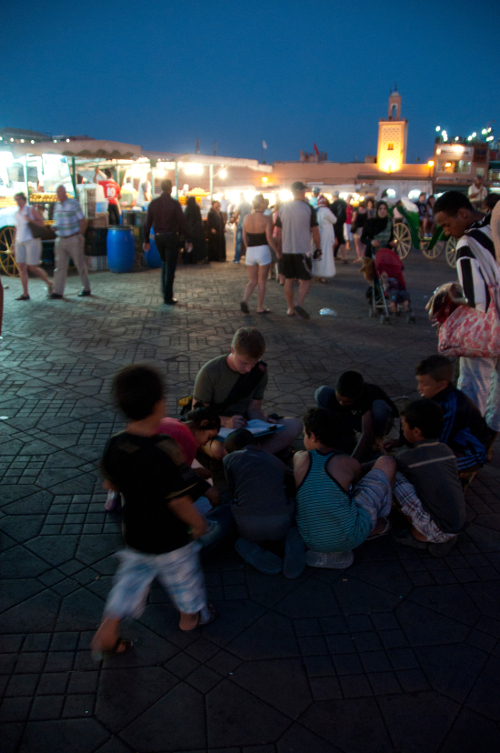
(Click each to enlarge)
Jules: If you have illustrated for various age ranges (such as both early readers and picture books) can you briefly discuss the differences in illustrating for one age group to another?
Evan: I have only done picture books so far, so I can’t speak on the difference. But I try to focus on making art that tells a story as completely and as clearly as I can, whether to an adult or child audience. I think there should always be different levels to something, and the best pieces of art are ones that get better the more you look and read. That applies to all ages, for me.






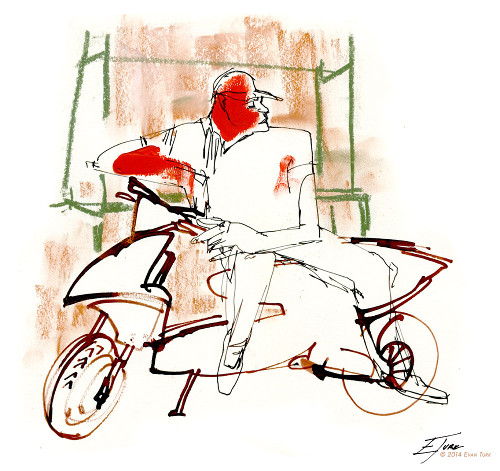




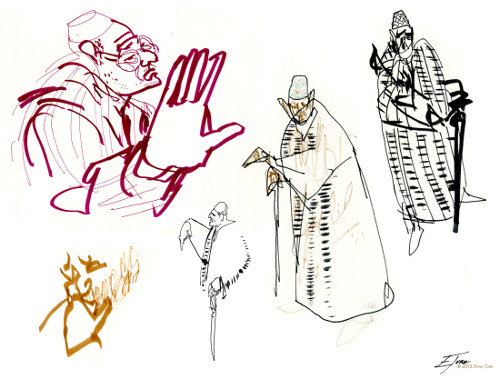


(Read here and here for more info)
(Click all but first image to enlarge)
Jules: Where are your stompin’ grounds?
Evan: I live in Jackson Heights, Queens, with my husband and two cats. I am originally from Colorado, but I have been in New York for ten years.

‘But here, take one of my brass cups. If you find water,
you can drink and share it with others.'”
(Click to enlarge spread)

(Click to enlarge spread)

(Click to enlarge spread)

(Click to enlarge spread)

and soon the djinn arrived as well. …”
(Click to enlarge spread)
(Atheneum, June 2016)
(Read here and here for more behind-the-scenes on the book)
Jules: Can you briefly tell me about your road to publication?
Evan: My senior thesis project at Parsons School of Design was a children’s book and animation about a boy, set in India. At the end of the year, we gave three-minute presentations to a panel of people in the industry for critique. One of the people in the panel happened to be Ann Bobco, a wonderful art director at Simon & Schuster. While I was talking, she put her hand to her ear in the “call me” gesture, so after I was finished, I rushed over to talk to her. I came in to meet with her and Namrata Tripathi (now at Dial) at Atheneum, and it turned out that they had had the manuscript for Grandfather Gandhi for about ten years and had been looking for the right illustrator. After jumping up and down and e-mailing everyone I knew, I did a sort of “audition” of how I would interpret the book, and I got it! I couldn’t have asked for a more amazing first job out of school.










(Read more here)
(Click each to enlarge)
Jules: Can you please point readers to your web site and/or blog?
Evan:
Jules: If you do school visits, tell me what they’re like.
Evan: I love doing school visits. I like to talk to the kids about the idea of visual research, looking at art, and reading the art and symbolism in a book like you would the words. It’s really exciting to see kids think about art in a different way. I talk about being an illustrator, and all that entails, and about the creation of the art for each book. I’ve started doing readings for The Storyteller, which has been amazing! It’s so wonderful to see the kids get excited about the refrain and see things click as they start to understand the surprises towards the end.
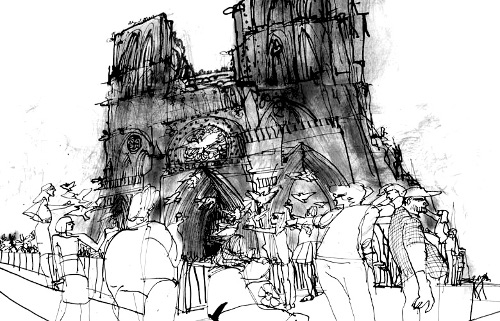
Jules: If you teach illustration, by chance, tell me how that influences your work as an illustrator.
Evan: I do not teach but would love to at some point! I have taught private animation lessons.
Jules: Any new titles/projects you might be working on now that you can tell me about?
Evan: The Storyteller, my first book as author/illustrator, is the story of a young boy in Morocco, who inadvertently becomes an apprentice to one of the last Moroccan master storytellers. Through a series of stories within stories, he learns the power of these tales and uses them to defeat a looming sandstorm.
A companion book to Grandfather Gandhi, called Be The Change, will be out August 28! It was great to work with Bethany Hegedus and Arun Gandhi again to tell a different lesson that Arun learned while living with his grandfather. The first book was about channeling your anger into something useful, while this one is about realizing the impact that your actions have on the world. It’s a great lesson, and I had a wonderful time doing the illustrations. In addition to the collage style from the first book, I used embroidery to take the symbol of the thread in a new direction for this story. I looked at a lot of Bangladeshi Kantha quilts and thought the stitching would be a great way to illustrate the continuing thread of a person’s actions — and how all the pieces come together to form a greater whole.


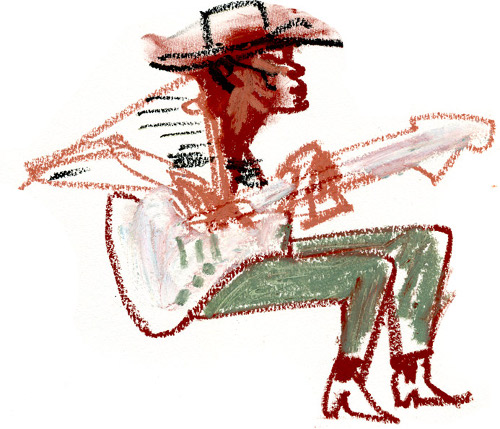
I also just finished working on Muddy, a picture book biography of Muddy Waters, written by Michael Mahin. I am so excited about this book! The writing is beautiful, and it was really interesting for me to learn as much as I could about the history of blues and Muddy’s music. I went down to the Mississippi Delta [more info here], where he was born and grew up, to draw, listen to music, and talk to people. And then I went to Chicago [more info here], where he went to make a career of music. While I was there, I got to see and draw some amazing blues performers, including Buddy Guy, who knew and played with Muddy. It was amazing to really delve into a topic that I didn’t have a lot of experience with — and come up with a visual way to try and express what Muddy’s history and his music were about.



 Okay, the coffee’s brewed, and it’s time to get a bit more detailed with seven questions over breakfast. I thank Evan again for visiting 7-Imp.
Okay, the coffee’s brewed, and it’s time to get a bit more detailed with seven questions over breakfast. I thank Evan again for visiting 7-Imp.
1. Jules: What exactly is your process when you are illustrating a book? You can start wherever you’d like when answering: getting initial ideas, starting to illustrate, or even what it’s like under deadline, etc. Do you outline a great deal of the book before you illustrate or just let your muse lead you on and see where you end up?
Evan: If I am illustrating someone else’s text, my first step is to read it over many times, making notes and visual notes in the margins. Then I start to research about the topic and continue rereading the manuscript. I’ll do a lot of reading and visual research, trying to find what else I think is important about the topic and the story beyond what is written in the text.
If I am writing and illustrating the story, the ideas usually come out of drawing and learning about something that I am interested in. The more I learn about something, the more I want to talk and draw about it, so eventually a story kind of comes to the surface. The Storyteller initially came out of being exposed to Morocco at EPCOT Morocco in Disney World during a reportage drawing workshop with Dalvero Academy, a private school I continue to study with. That led to learning about the actual country, reading about it, and taking a trip there. While researching before our trip, I read a book called The Last Storytellers by Richard Hamilton, which talked about the fading, thousand-year-old tradition of public storytellers in Morocco. That became the inspiration for The Storyteller.



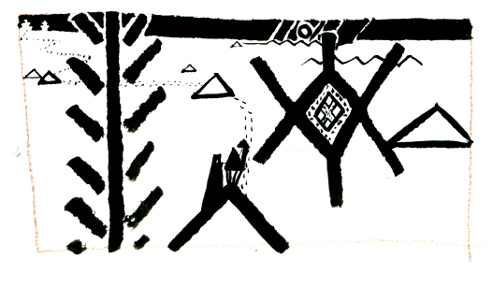


















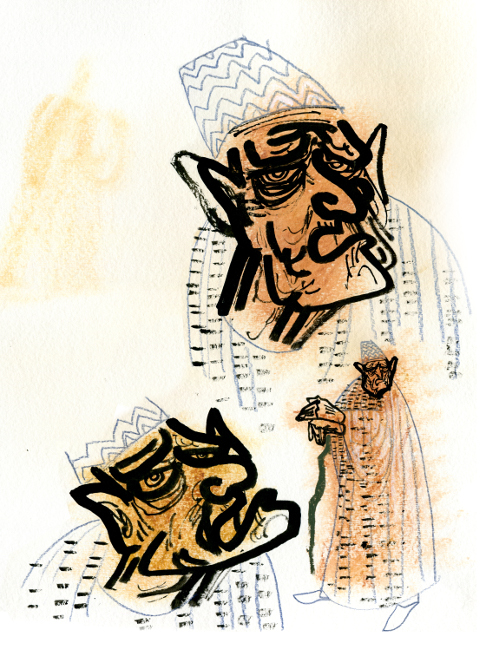

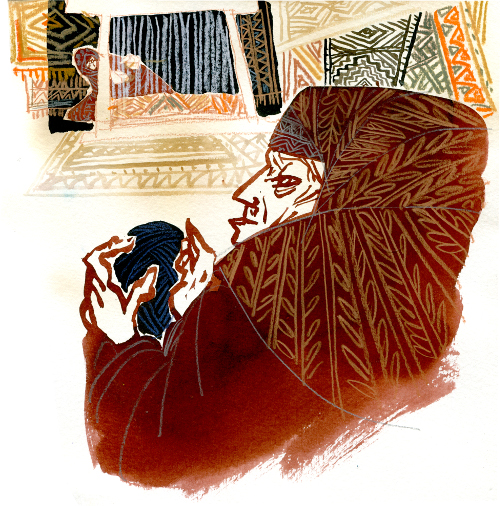

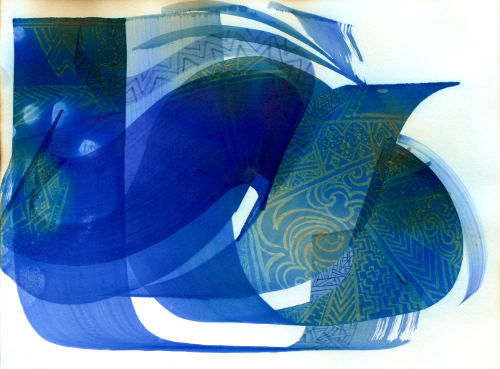
including sketches, notes, thumbnails, character sketches, etc.
(Click each to enlarge)
Then for either type of project, I try to look at as many different artistic influences as I can, including ones related to the topic (for instance, Moroccan carpets and Arabic calligraphy for The Storyteller) but also ones that may seem out of left field (Austrian artist Gustav Klimt for The Storyteller) but that feel right for the type of story and type of illustration.
I also spend a lot of time drawing people and places for a particular project — to help make the body language more natural. For Grandfather Gandhi and Be The Change, I spent time drawing in my own neighborhood of Jackson Heights, which has a large South Asian population; for The Storyteller I took a second research trip to Morocco to meet and draw storytellers, carpet weavers, and everyday Moroccans to help create the characters and places; for Muddy, I took a trip to the Mississippi Delta, where he was born, and to Chicago, where he made it big, to draw blues singers and get a feel for the places and the music. There are a lot of observations that come through from drawing on location that add to the authenticity and spontaneity of the illustrations in the final artwork.




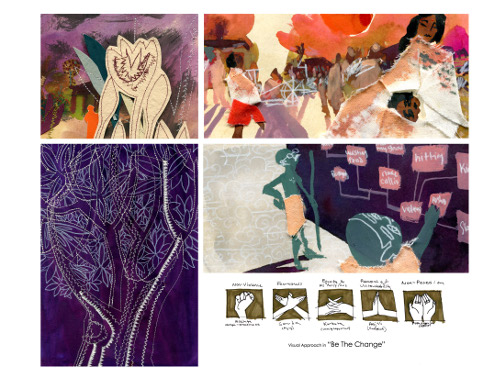

Be The Change, including the book’s proposal and pagination
(Click each to enlarge)
Then I will create a pagination of small thumbnail drawings to figure out how I will break down the text, page by page, and what I want to show on each spread. It allows me to see the whole book at once and see how each page relates to the next and the one before it. I’ll also create a color pagination of tiny paintings to figure out how the colors will change throughout the book. In The Storyteller [below], each nested story had its own color palette and design style. The color blue, representing stories and water, was central throughout the book, so I could figure out in the color pagination how to best set that off as the story progressed.

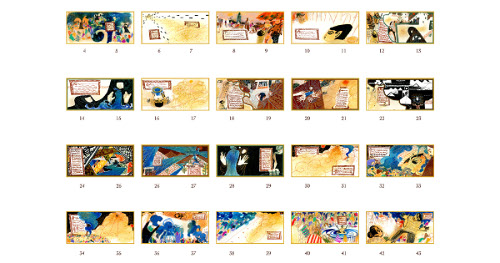

In Be The Change, the book takes place during monsoon season where Arun’s confusion over the lessons he’s supposed to learn builds as the clouds build. So in the color pagination [below], you can see how the book starts bright and colorfully, then becomes black with the swelling clouds, grey when the clouds burst, and the color returns at the end as Arun learns the lesson.

After that, I will sometimes make a small dummy of the book. Then I create sketches to figure out the expressions, poses, and final layouts of the pictures. And then from there, I work on the finals! The preparation usually takes much longer than the actual art, but because I’ve figured everything out before, the finals are more playful for me.


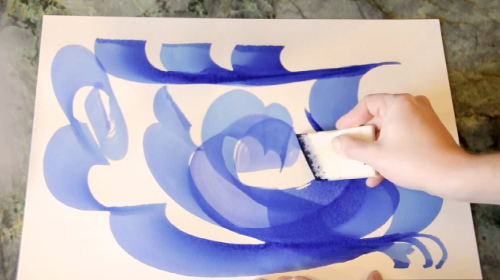





2. Jules: Describe your studio or usual work space.
Evan: I have two desks, one with a computer and one with all of my materials for a certain project. I’ll usually work on the non-computer desk until I fill it up with paper and too many materials, then move over to the computer desk until that one is full and messy. Then once I have no more desk space, I’ll clean both desks and start the process over. Gradually, over the course of working on a book, my floor disappears under a pile of paper. [Below] is an unvarnished look at how messy my desks really are currently!
3. Jules: As a book-lover, it interests me: What books or authors and/or illustrators influenced you as an early reader?
Evan: As far as picture books, I tended to like folktales from around the world with beautiful illustrations. A few I read many many times are Why Mosquitos Buzz in People’s Ears by Verna Aardema with illustrations by Leo and Diane Dillon; The Girl Who Loved Wild Horses by Paul Goble; The Hallowed Horse by Demi. I also loved anything with a cute animal: Does Anyone Know Where a Hermit Crab Goes? by Michael Glaser; Corduroy by Don Freeman; The Rainbow Fish by Marcus Pfister (those *scales*!); The Sign of the Seahorse by Graeme Base. The Velveteen Rabbit still makes me cry.
 4. Jules: If you could have three (living) authors or illustrators—whom you have not yet met—over for coffee or a glass of rich, red wine, whom would you choose? (Some people cheat and list deceased authors/illustrators. I won’t tell.)
4. Jules: If you could have three (living) authors or illustrators—whom you have not yet met—over for coffee or a glass of rich, red wine, whom would you choose? (Some people cheat and list deceased authors/illustrators. I won’t tell.)
Evan: Ed Young, R. Gregory Christie, David Gentleman. (And Xu Bing, who might not consider himself an illustrator, but I certainly do!)
5. Jules: What is currently in rotation on your iPod or loaded in your CD player? Do you listen to music while you create books?
Evan: Uhh right now it’s still just Beyoncé -– Lemonade. Sometimes I’ll listen to a lot of music related to a particular project to keep myself going while working all day. I usually have a playlist of songs for each project that I will pull out if I find myself getting distracted during the day. I listened to a lot of Muddy Waters and Son House while working on Muddy, which was great — particularly, in the research phase and while driving around Mississippi.
6. Jules: What’s one thing that most people don’t know about you?
Evan: I also love to do ceramics. I started taking classes with my husband about two years ago and was instantly hooked! It’s very liberating for me to do something creative outside of drawing/illustrating/animating. Plus it’s so tactile and engrossing.






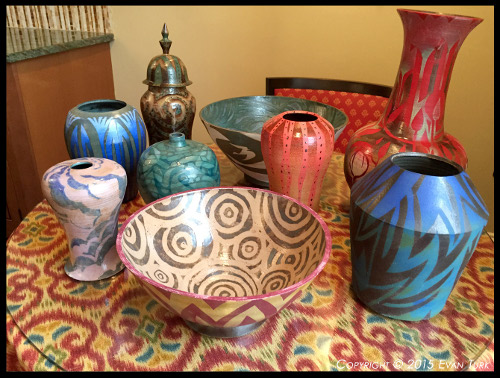
7. Jules: Is there something you wish interviewers would ask you — but never do? Feel free to ask and respond here.
Evan: Are there any secrets in The Storyteller?
Why, yes, there are! Not necessarily secrets, but things you can find if you look closely enough.
- My two cats appear in the book. Pica is a brown manx cat, so she just has a little bobtail. And Bert is white and tan.
- The borders of each nested story change throughout the book. Look for how the color blue becomes important as stories and water become more present in each tale.
- Often, Moroccan storytellers will change their stories to relate to their specific audience. Sometimes they will reference members of the audience as characters to help draw listeners in. Take a look at the audience on the last spread — to see if there are any familiar faces.


Jules: What is your favorite word?
Evan: I feel like I’ve been saying the word “spectacular” a lot recently.
Jules: What is your least favorite word?
Evan: Can’t think of one!
Jules: What turns you on creatively, spiritually or emotionally?
Evan: Learning or seeing something new, authentic, and passionate.
Jules: What turns you off?
Evan: People being resistant to new experiences.
7-Imp: What is your favorite curse word? (optional)
Evan: I like all of them, particularly when directing them at whichever art material’s fault it is that I messed something up.
Jules: What sound or noise do you love?
Evan: The sound of leaves blowing in the breeze.
Jules: What sound or noise do you hate?
Evan: Car alarms.
Jules: What profession other than your own would you like to attempt?
Evan: If I wasn’t doing children’s books, I’d like to be an international social journalist (or preferably, do both!). I love traveling, reportage illustration, and learning about people and places. So, even though I kind of get to do some of that with children’s books, I’d like to do it as an actual career too.
Jules: What profession would you not like to do?
Evan: Investment banker maybe?
Jules: If Heaven exists, what would you like to hear God say when you arrive at the Pearly Gates?
Evan: “Whew, nice one!”
All artwork and images used with permission of Evan Turk.
The spiffy and slightly sinister gentleman introducing the Pivot Questionnaire is Alfred, © 2009 Matt Phelan.


Oh, for crying out loud, he also makes the most beautiful pottery in the world? Is there nothing this man can’t do? And yet he doesn’t offer it for sale on his website. *sigh* If some kind soul ever finds out if it is for sale somewhere, please post that link here.
I’m with you, Betsy. My thoughts exactly.
I am totally smitten with Evan Turk’s work. And I thank him for mentioning David Gentleman–new to me, beautiful work.
Ohhhhh, the pottery. I thought the illustrations in GRANDFATHER GANDHI were so, so good, but now to see more? And his sketchbook is just… alive.
WOW.
[…] Danielson at “7 Impossible Things Before Breakfast” interviewed The Storyteller creator Evan Turk about the creation of The Storyteller, […]
This post is too much to handle in one read…The sheer amount of beauty, hard work and brilliance of ideas makes me cry… and want to go out there and do more, more, more!
I think this feeling is called INSPIRATION, times 100. Evan…
[…] — From Kathryn Otoshi’s Draw the Line(Click to enlarge spread) — From Suzy Lee’s Lines(Click to enlarge spread) Today over at Kirkus, I write about Michael Mahin’s Muddy: The Story of Blues Legend Muddy Waters (Atheneum, September 2017), illustrated by Evan Turk. […]